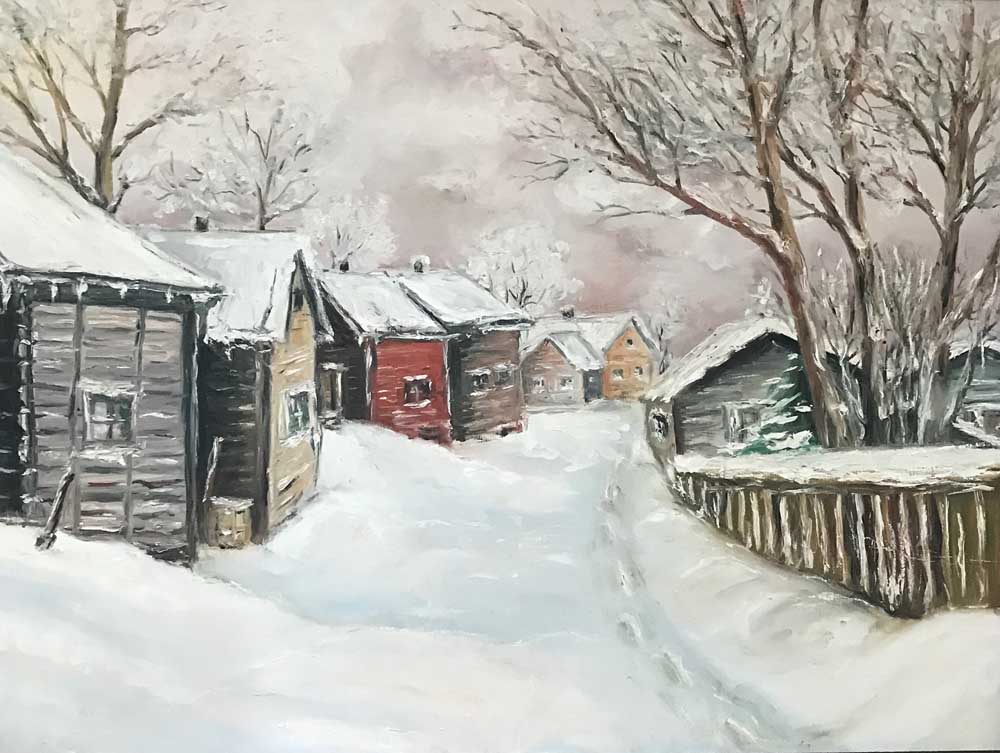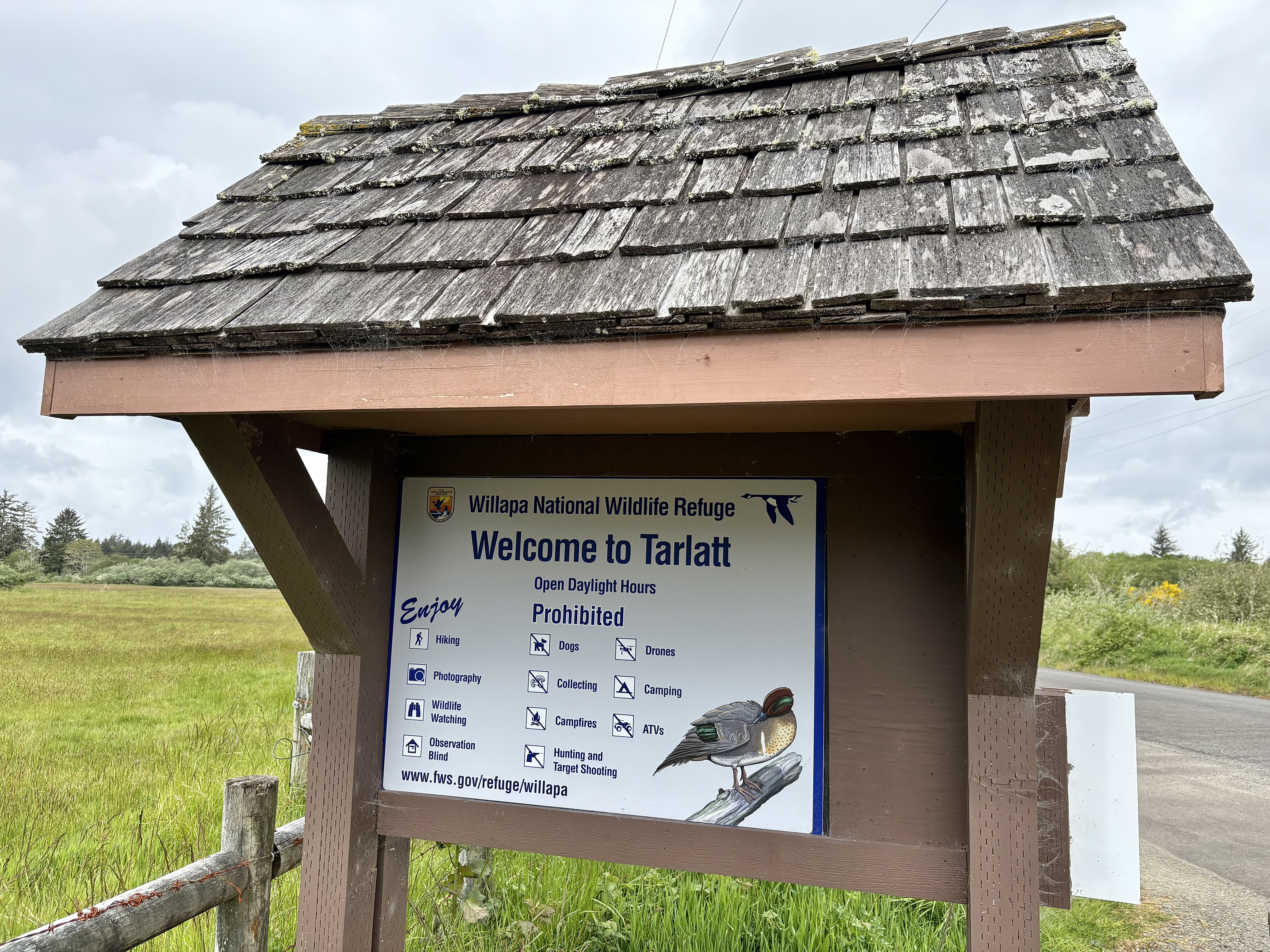Coast Chronicles: The Spirit of Holidays Past
Published 12:47 pm Monday, December 19, 2022

- Al Better, artist and wood carver, made this painting from a memory of his family’s Christmases of gift giving in Guilford, Maine.
It seems to me we just stepped into winter but, OMG, this week it’s Christmas. Either I’m moving slower and time is moving faster, or some combination, because — wow! — how did we get here so soon?
Trending
I decided months ago to forego the usual holiday buying frenzy to send money instead to the people of Ukraine who are fighting a proxy war with Russia on behalf of our Western nations. Yes, I know we’ve sent billions for missile defense, medical and energy interventions; but meanwhile I’m sitting by the fire with hot chocolate while Ukrainians are either burying family members or trying not to freeze. (For those inclined, President Zelenskyy launched a Ukrainian aid site, United24: u24.gov.ua.)
Meanwhile, we’ve had some sunny winter days with deer bounding; finches, sparrows, crows, robins, jays, doves and starlings flocking to our feeders; and squirrels busily preparing for deeper winter. Thankfully, everyone I know is healthy and happy to be alive. So, despite the grim daily news reports, I thought it might be fun to hear about a few cheery tales of Christmases Past.
Chanukah traditions
Community booster and wife to Joe, Charlotte Paliani writes: “For Chanukah my family had a large crowd, about 40, with potato pancakes (latkes) with sour cream, applesauce and jam, jelly donuts, brisket, kugel (sweet noodle casserole), and lots of other side dishes. The object is to eat things fried in oil. The oil is because in order to rededicate the temple in 165 BC (or BCE as Jews say it), the Maccabees had to light a menorah that would burn within the temple at all times, but they only had enough pure olive oil to last one day. Miraculously, the oil burned for eight days, leaving time to find a fresh supply. That’s the story, and so we eat things fried in oil.
“We used to light the menorah and sing songs. I never had a tree — there really is no such thing as a Chanukah bush — and I was always jealous of my friends with stockings, so eventually my mom gave in and hung one. But it was my size [Charlotte is petite], so you’d get a dime, a tangerine or a bit of chocolate. My friends were envious because we got presents for eight nights, but they were small gifts and the tradition was gelt (money) which was probably under a dollar a night in those days. As everyone got older there was more competition with Christmas and presents got bigger. I spent one Chanukah in Israel with my cousins and we all got socks and some candy. Mainly Chanukah was about family, food and celebration.”
Carol Newman, of KMUN fame, adds, “Chanukah, the Festival of Lights, commemorates the rededication of the Temple in Jerusalem nearly 2,200 years ago after a successful struggle for religious freedom led by the Maccabean family. It begins the 25th day of the lunar month of Kislev. Because it’s closest to the winter solstice, the longest darkest night of the year, we celebrate by lighting candles each of the eight nights, adding one each night, growing the light in this time of darkness.”
“This year, 5783 in the Hebrew calendar, we’ll light our first candle Sunday evening, Dec. 18. I have wonderful memories of my family gathered in our Brooklyn, NY kitchen around the Chanukah menorah (chanukiah) each night. We sang, my brothers harmonizing beautifully as we chanted the prayers — three the first night and two each of the following nights — and gave thanks for being alive, together, and for miracles long ago and now, knowing that Jewish people all over the world were doing the same.”
“I’ve been fortunate to share many of these traditions with my Brownsmead family and other friends in the nearly fifty years I’ve lived here. We light the candles, chant or hum the prayers, share gifts including chocolate Chanukah gelt, spin the dreidel, and eat latkes. Chanukah brings the message of Light over darkness, Hope over despair, Good over evil, Courage and Compassion for all beings, the earth, then and now. I wish everyone Peace, Joy and Light.”
Gift-giving in Maine
Here’s what Navy Seal and artist Al Betters remembers. “While I lived in Guilford, Maine, every Christmas my mother and aunt would take baskets of food and clothing to the migrant workers staying in cabins built before WWII. These cabins were equipped with bare essentials and not insulated. One Christmas when I was about 11, I went with them and the first cabin we entered had a dirt floor because the man had pulled up the wood to burn and the two small children were running around in only T-shirts, diapers and bare feet. It was close to 10 below zero! This image has always been with me as a reminder of just how lucky I’ve been. (I recently did a painting from memory of the cabins.) We also, cut our own tree and trimmed it with ornaments made by children from the churches of the four surrounding towns.
“Christmas didn’t stop the chores though — milking cows at 5 a.m. in a cold barn every morning and cutting trees in two feet of snow got me conditioned and my body accustomed to our weather.” (Al is a good friend and podmate, and we always complain about the arctic conditions in his house. Obviously, he comes by that honestly!)
Hit-and-run Christmas Tree
Chef Nanci Main shares, “My parents counted every penny after they moved from their 18 foot trailer into their first home in Castro Valley, California. There was no room in the tight budget for a tree on their first Christmas. But what my father lacked in finances he made up for in ingenuity. He retrieved a sparse mangled tree from the back of the sales lot destined for the burn pile — it had actually been run over! Then he asked for all the trimmed branches from the various other trees. Back home, bringing out his drill, he put holes all along the trunk of the hit-and-run tree and created a fir, pine, noble fir and spruce tree combo. With lights, tinsel and bulbs it achieved nobility.
“Also, every Christmas mom would give dad a wrapped up package of fabric along with a nightshirt pattern and the promise to make it in the coming year. She never got around to sewing that flannel nightshirt. So it became a family tradition to see that same fabric and pattern in new wrapping year after year as she extended her promise. The nightshirt never did materialize, but our family’s laughter each year was guaranteed.”
Oysters and Baby Jesus
My neighbor, Francois Manavit, adds his French memories to the mix, “From 1965, my parents used to have a nativity display next to the tree, and every year magically on the 25th Baby Jesus would appear in the hay in the stable. It was forbidden to play with him. I had to play with my soldiers, cowboys, and Indians fighting all the time. (I made great noises of the guns and arrows for the fighting scenes!) But then one day helping to set the table, I found Baby Jesus in the kitchen drawer in between the birthday candles and some plastic straws. Questions arose and doubts followed!
“Also my parents always put some oranges at the bottom of the tree — a big disappointment for us kids. We always thought Santa never came, but in fact we realized he did after we got the explanation for ‘Why oranges?’ It was a reminder of what our parents went through during World War I and World War II. They wanted us to know that the children of France at that time got nothing except maybe an orange. Foodwise, we always had oysters for Christmas, and since I moved to Ocean Park for the oysters — let me tell you — Christmas here is every day! No more disappointment!”
So count your blessings, my friends, and remember that you are adding to your bank of holiday memories, storing them up for years to come. Happy holidays everyone!









